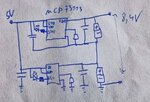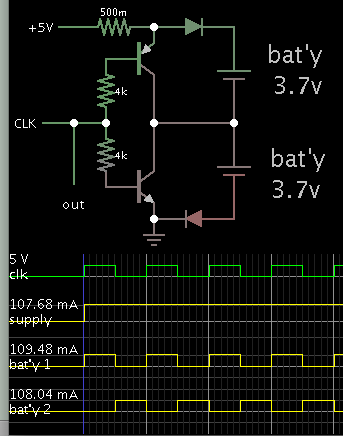Adiz
Newbie level 6

Hello,
I want to make a charger from USB 5V port, to charge two series 3.7V Li-Ion batteries. What would be the standard cheapest approach? Should I buy a 2cell li-ion charger ic (MCP73213 but the price is huge) and place a step up to 7.4V? I want to make small and cheap ic. So currently I am thinking about taking two 1 cell chargers (MCP73831) and put them for each battery.
Would this be possible? Or do I need a switch between two batteries, cuz when lower battery is charged, there might be not enough potential for charging higher. Or maybe this schematic is illogical?
I want to make a charger from USB 5V port, to charge two series 3.7V Li-Ion batteries. What would be the standard cheapest approach? Should I buy a 2cell li-ion charger ic (MCP73213 but the price is huge) and place a step up to 7.4V? I want to make small and cheap ic. So currently I am thinking about taking two 1 cell chargers (MCP73831) and put them for each battery.

Would this be possible? Or do I need a switch between two batteries, cuz when lower battery is charged, there might be not enough potential for charging higher. Or maybe this schematic is illogical?



